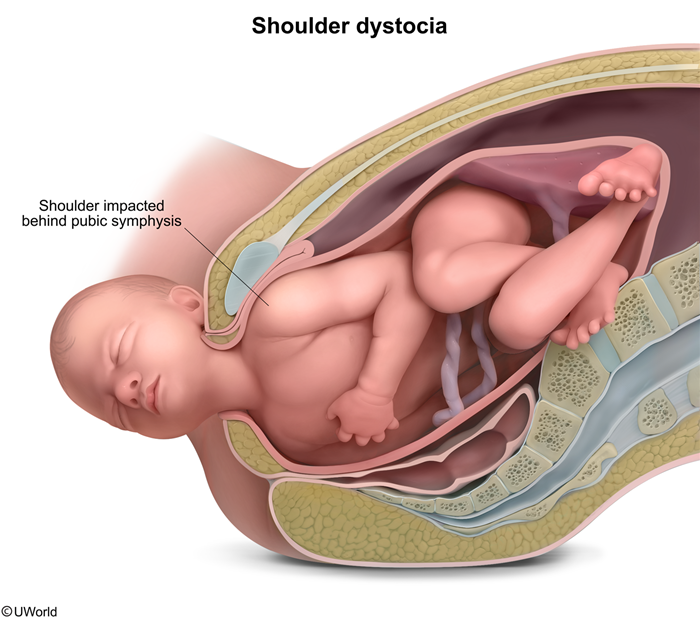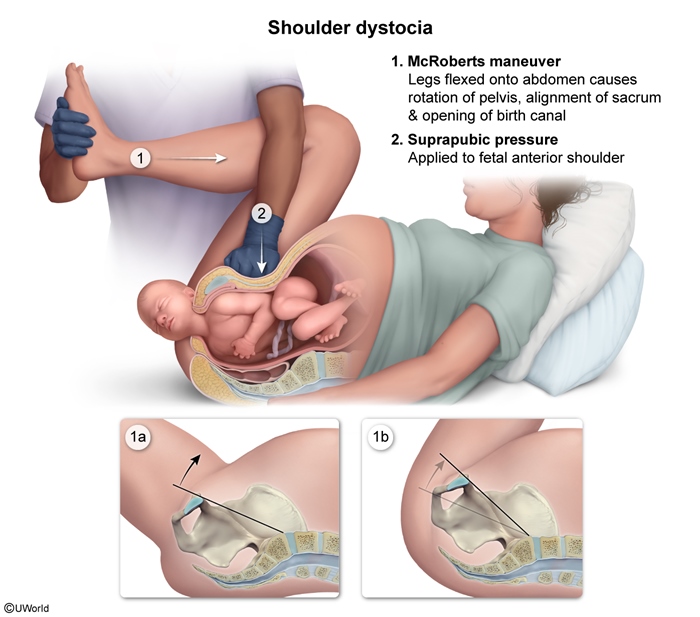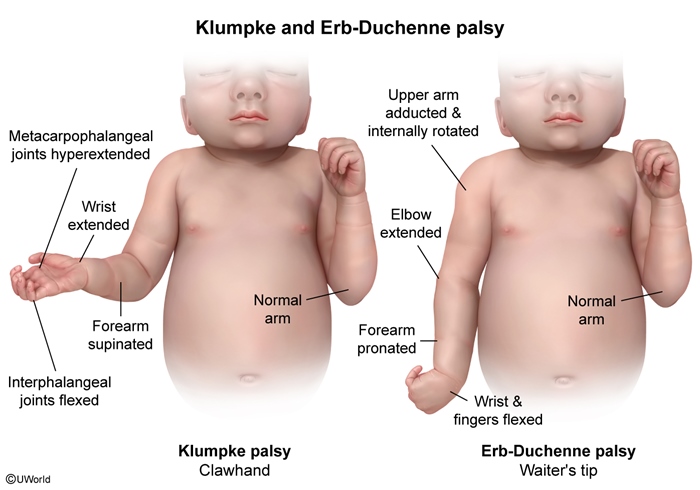Shoulder Dystocia
Article Sections
Introduction
Shoulder dystocia is an obstetric emergency that occurs when the fetal shoulder becomes impacted behind the maternal pubic symphysis during vaginal delivery, resulting in an inability to deliver the fetal shoulders with usual obstetric maneuvers (Figure 1).
Pathophysiology and risk factors
In typical deliveries, after the fetal head is delivered, the shoulders should follow smoothly. In shoulder dystocia, the shoulders become stuck in the maternal pelvis for reasons such as a large fetal size compared to the maternal pelvic outlet (by far the most common), maternal pelvic anatomy, or the positioning of the fetal shoulders.
Risk factors for shoulder dystocia are related to the fetus becoming larger than the maternal pelvic outlet and include:
- Fetal macrosomia (estimated fetal weight >4.5 kg [9 lb 14 oz]) (highest risk factor)
Continue Learning with UWorld
Get the full Shoulder Dystocia article plus rich visuals, real-world cases, and in-depth insights from medical experts, all available through the UWorld Medical Library.
Figures


